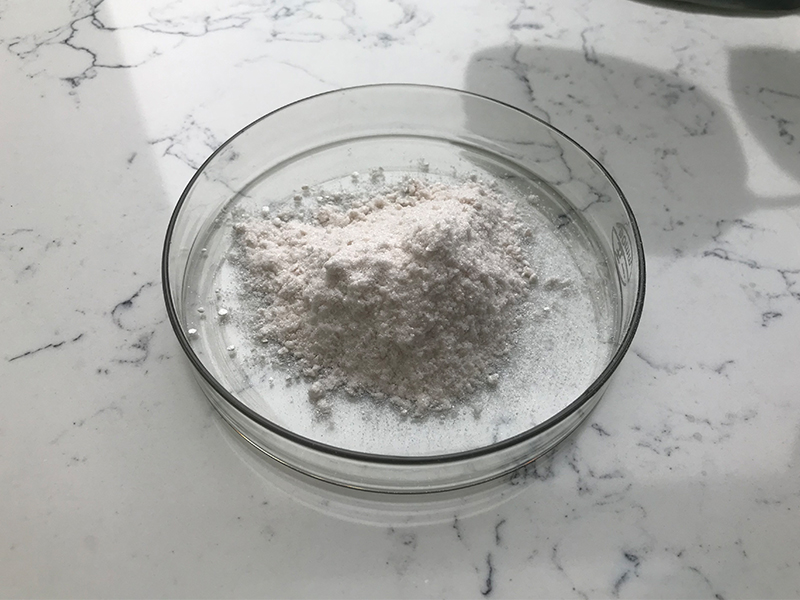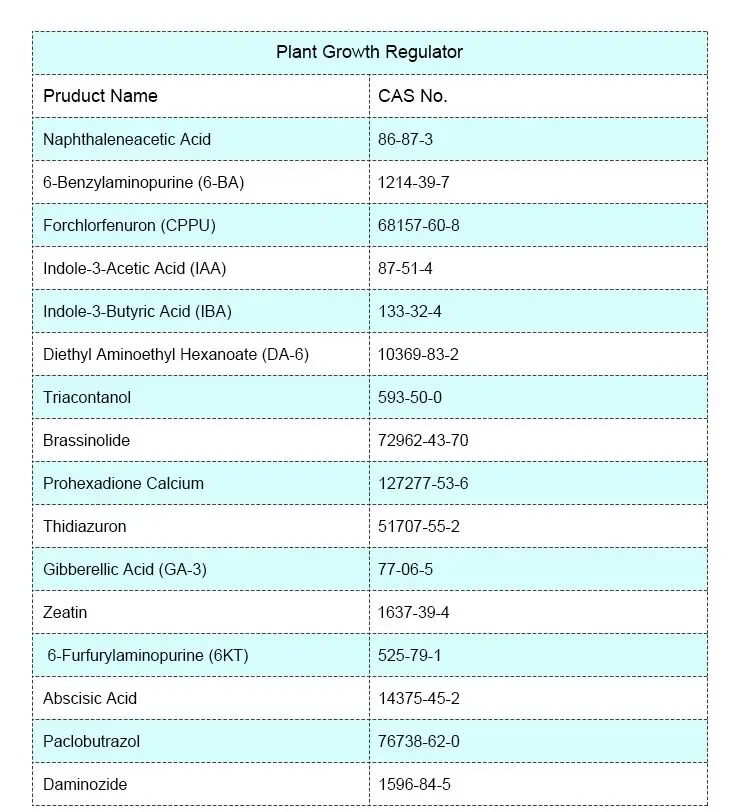Indolebutyric Acid (IBA) and Indole-3-Acetic Acid (IAA) are both plant hormones that play important roles in the growth and development of plants, particularly in processes such as root initiation and development. Here are the key differences between the two:
1.Chemical Structure:
Indolebutyric Acid (IBA): Indolebutyric Acid is a synthetic auxin with the chemical formula C12H13NO2. It is derived from indole, which is a heterocyclic aromatic compound.
Indole-3-Acetic Acid (IAA): Indole-3-Acetic Acid is a natural auxin and is the primary auxin produced by plants. Its chemical formula is C10H9NO2.
2.Source:
Indolebutyric Acid (IBA): Indolebutyric Acid is a synthetic compound, meaning it is chemically synthesized and not naturally occurring in plants.
Indole-3-Acetic Acid (IAA): Indole-3-Acetic Acid is a naturally occurring auxin found in plants. It is produced in various parts of the plant, including the apical meristem, young leaves, and developing seeds.
3.Role in Rooting:
Indolebutyric Acid (IBA): Indolebutyric Acid is commonly used in horticulture and agriculture for its role in promoting root initiation and development in cuttings. It is often used as a rooting hormone in propagation.
Indole-3-Acetic Acid (IAA): Indole-3-Acetic Acid also plays a role in root development, but it is more associated with various other physiological processes in plants, such as cell elongation, apical dominance, and tropic responses.

4.Stability:
Indolebutyric Acid (IBA): Indolebutyric Acid is known for its relative stability, making it suitable for use in rooting hormone formulations.
Indole-3-Acetic Acid (IAA): Indole-3-Acetic Acid is less stable compared to IBA and can be more easily broken down by light and other environmental factors.
5.Applications:
Indolebutyric Acid (IBA): Due to its stability and effectiveness in promoting root formation, Indolebutyric Acid is commonly used in the rooting of cuttings in horticulture and forestry.
Indole-3-Acetic Acid (IAA): Indole-3-Acetic Acid is more involved in the general growth and development of plants and is not as commonly used in rooting hormone formulations.
In summary, while both Indolebutyric Acid (IBA) and Indole-3-Acetic Acid (IAA) are auxins that influence plant growth, Indolebutyric Acid (IBA) is a synthetic compound often used specifically for its rooting-promoting properties, especially in the context of plant propagation, while Indole-3-Acetic Acid (IAA) is a naturally occurring auxin with a broader range of physiological roles in plants.
Adverse Effects of Indolebutyric Acid
Indolebutyric Acid (IBA) is a synthetic auxin, a type of plant hormone that plays a crucial role in plant growth and development. It is commonly used in horticulture for rooting hormones to promote the formation of roots in plant cuttings. While Indolebutyric Acid is generally considered safe and effective when used appropriately, like any chemical substance, it can have adverse effects if not used correctly. Here are some potential adverse effects of Indolebutyric Acid:
Toxicity at High Concentrations: Using Indolebutyric Acid at concentrations higher than recommended can be harmful to plants. It may lead to overstimulation of root growth, which can result in an imbalanced and unhealthy plant.
Phytotoxicity: Some plant species or cultivars may be more sensitive to Indolebutyric Acid than others. High concentrations or prolonged exposure can cause phytotoxicity, resulting in leaf burn, stunted growth, or other negative effects.
Environmental Impact: Improper disposal of unused Indolebutyric Acid solutions or contaminated media can have environmental implications. It is essential to follow guidelines for disposal to prevent contamination of water sources and soil.

Human Health Concerns: While Indolebutyric Acid is generally safe for plant use, it’s important to handle it with care. Direct contact with the skin or inhalation of Indolebutyric Acid powder can cause irritation. Proper personal protective equipment (PPE) should be used during handling.
Resistance Development: Continuous and indiscriminate use of rooting hormones, including Indolebutyric Acid, may lead to the development of resistance in certain plant species. This resistance can reduce the effectiveness of Indolebutyric Acid in promoting root development.
Disruption of Natural Hormonal Balance: Excessive use of Indolebutyric Acid can potentially disrupt the natural hormonal balance within the plant, leading to unintended consequences on overall growth and development.
To minimize the adverse effects of Indolebutyric Acid, it is crucial to follow recommended application rates, concentrations, and application methods provided by manufacturers. Additionally, users should be aware of the specific needs and sensitivities of the plant species they are working with. Always read and follow the product label instructions and take necessary precautions to ensure safe handling and application. If there are concerns about the use of Indolebutyric Acid, consulting with experts or professionals in horticulture can provide valuable guidance.
